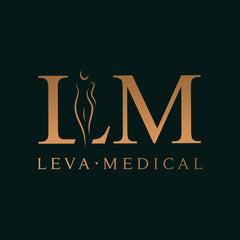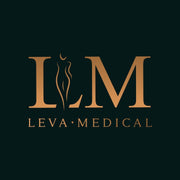Inverted Nipple Surgery
Understanding Inverted Nipple Correction Surgery
Inverted nipple repair, often referred to as inverted nipple correction surgery, is a cosmetic surgical technique specially developed to correct nipple inversion—a common condition where nipples, instead of protruding naturally, turn inward or lay flat. Nipple inversion can affect one or both breasts and may be congenital or develop later due to factors such as breastfeeding, trauma, or changes in breast tissue.
While nipple inversion is often considered a cosmetic concern, it can cause functional issues, particularly with breastfeeding. Moreover, it can lead to feelings of self-consciousness and discomfort, affecting self-esteem. As a result, many people opt for inverted nipple correction surgery to enhance their confidence and quality of life.
Why Choose Leva Medical for Your Inverted Nipple Correction Surgery?
At Leva Medical, our experienced cosmetic surgeons are skilled in the latest inverted nipple correction techniques. We are committed to providing patient-centered care, delivering a safe and effective procedure tailored to your needs and aesthetic goals. Our practice, accredited by the American Association for Accreditation of Ambulatory Surgery Facilities, is recognized for its high safety and patient care standards.
We understand that every patient has unique health histories, breast shapes, and degrees of nipple inversion. Hence, we customize each surgical plan to suit individual patient's needs, aiming to achieve a natural appearance and optimal outcomes.
Personalized Consultation and Procedure Planning
During your initial consultation, our team conducts a comprehensive nipple examination, considering factors such as the severity of the inversion, nipple and areola size, and any associated conditions like breast cancer. We discuss your options for nipple correction surgery, explain the procedure in detail, answer any questions, and decide on the best surgical technique for you together.
The procedure, generally performed as an outpatient procedure under local anesthesia, takes approximately one hour. Our surgical technique primarily involves making a small incision at the base of the nipple. Through this incision, the tethering milk ducts causing the inversion are carefully cut to release the nipple, while preserving as much of the ductal system as possible. This method not only enables the nipple to protrude naturally but also maintains nipple sensitivity and the possibility of breastfeeding in the future.
Post-Operative Care and Recovery
After the inverted nipple correction surgery, proper nipple care is crucial for optimal healing and results. To aid healing, you might need to wear a protective shield over the nipple to maintain its new shape and protect it from clothing pressure and friction. We advise avoiding strenuous activities, exercise, and heavy lifting for a few weeks following the surgery.
Our team will provide detailed post-operative care instructions, including guidance on wound care, bathing, and managing any discomfort. Most patients experience some swelling and bruising, which usually subside within three days. Regular follow-up appointments will be scheduled to monitor your progress and ensure proper healing.
Inverted nipple correction surgery offers numerous benefits, including a change in appearance, enhanced self-confidence, improved nipple sensitivity, and potentially the ability to breastfeed. However, everyone's experience is unique, and benefits can vary. Hence, a thorough discussion with your surgeon about what you can realistically expect from the procedure is crucial.
Contact Leva Medical Today
If you're self-conscious about inverted nipples, understand that you're not alone and that effective treatments are available. At Leva Medical, we're dedicated to helping you explore your options and determine if inverted nipple correction surgery is the right choice for you. We believe every patient deserves to feel confident and comfortable in their own skin, and our team is committed to helping you realize that goal.
Contact us today to schedule a private consultation with one of our expert cosmetic surgeons. During this session, we'll answer all your questions, discuss your goals and expectations, and devise the best course of action based on your individual needs and circumstances. Don't let inverted nipples hinder your self-esteem or lifestyle. Reach out to us and take the first step towards feeling more confident and comfortable with your body.





